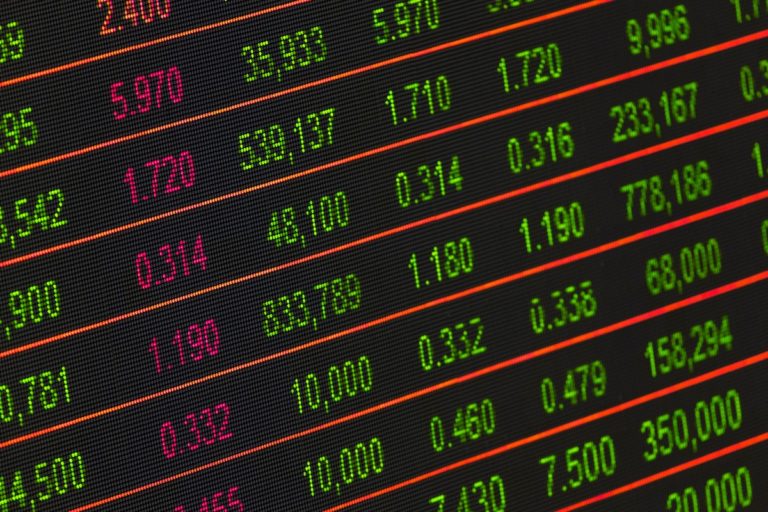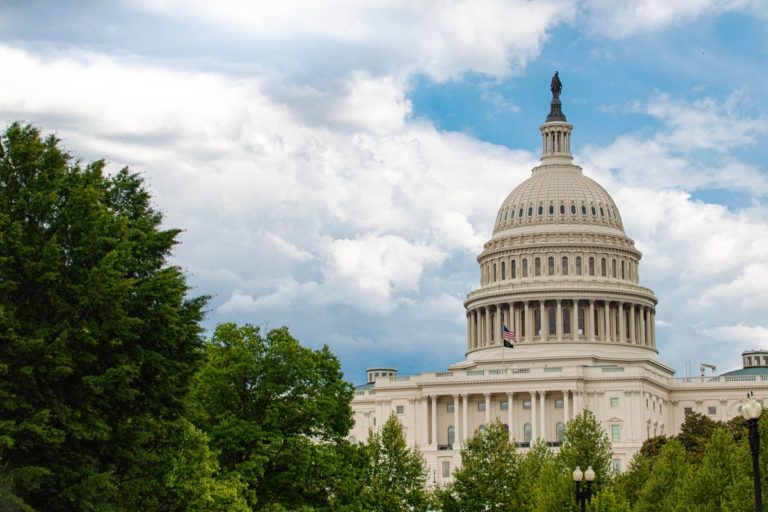Last quarter we posed the question of whether outside the largest “too big to fail banks,” would we see additional bank failures or perhaps a wave of consolidation. It was a quiet quarter for banks. But it could get exciting as the 10/20/30-year treasury bond yields rise. Banks usually hold on their balance sheets long-duration fixed-income investments. Whether considered held-to-maturity or available-for-sale, many long-term investments have significant paper losses. Elsewhere on banks’ balance sheets, credit losses are starting to rise after abnormally low losses due to the U.S. government printing money for citizens to spend. The deterioration in assets related to both investments and loans is paired with depositors moving their cash to interest-bearing accounts that currently exceed 5.0% at many banks for a 1-year CD. Depositors also have the ability, due to technology, to quickly pull deposits from their banks and move money to another bank. If deposits decline fast enough, banks may be required to sell assets to provide funds for exiting deposits and rebuilding capital.
On the geopolitical front, OPEC and Russia curtailed oil production recently which sent oil prices higher. One major risk is Russia’s decision to further cut oil and/or natural gas production, deciding price hikes will result in minimal loss of revenue despite the loss in volume. The US has significantly drained its strategic petroleum reserve while China reportedly has been stockpiling oil. The US fracking industry cannot ramp production overnight and is still scarred from 10 years ago when the Saudis flooded the market with oil as US oil frackers bled cash. The result could be higher gasoline, diesel, and jet fuel prices, in addition to products highly dependent on energy as a cost input. Last winter was mild, especially in Europe. Consequently, natural gas consumption was significantly less than expected. What is in store for oil and natural gas as we head into the winter and next year’s presidential election remains to be seen. The recent attack by Hamas against Israel could have further ramifications for energy prices, especially if Iran becomes part of the conflict.
In terms of inflation, Costco reported inflation of around 1.0% after seeing significantly higher year-over-year inflation in prior quarters. Yet Pepsi noted in its most recent earnings call that cost inflation will exceed 2-3%. When we last issued a newsletter, May CPI was 4.0%, subsequently declined to 3.0% growth in June but then rebounded to 3.7% in September. PPI growth was 1.1% in May and declined to 0.6% in June but has since rebounded to 2.5% growth through September. So, we may be seeing sticky commodity costs. Meanwhile, unions have received or are looking for significant wage increases at companies like UPS, as well as in the auto and airline industries. Mortgage rates are near 8.0%. Unemployment remains low at just 3.8% in August compared to 3.6% reported in May.
In the equity markets, the top seven companies by market cap continue to account for nearly all the growth in the S&P this year. The remaining 493 are flat to down. Valuations for most of the seven companies remain at significantly elevated levels not reflective of true earnings and cash flow growth prospects for those companies. That does not mean that good companies cannot be bought at good prices. In fixed income, bonds continue to show losses as higher interest rates keep the prices of bonds declining. There are buying opportunities out there. High-quality bonds of duration with solid yield to maturity can also be bought. But if interest rates remain elevated and the top seven stocks decline sharply in price, it is pretty safe to say the baby will be thrown out with the bath water.
The Federal Reserve appears to have ended its interest rate hiking cycle. To break inflation, “higher for longer” is now the mantra. Elevated rates are occurring at a time when the US government needs to issue significant amounts of debt to fund entitlements, defense, interest expense, and everyday operations. Who is going to buy these long-term treasuries? Will it be the Chinese? Maybe US banks? Or perhaps the Federal Reserve needs to step in to buy US treasuries and begin quantitative easing again? Does “higher for longer” impose significantly higher costs on borrowers, resulting in a significant slowdown in growth, declining stock prices, and higher employment?
We keep saying the markets are in a correction phase. It started with the Fed Pivot in late 2021 when markets peaked. Markets nosedived in 2022 as the Fed rapidly hiked rates. In 2023 so far, only a handful of mega-cap stocks have surged based on the hopes of artificial intelligence, masking potential problems in areas of the economy like consumer credit, the housing market, and corporate real estate. Meanwhile, US debt levels soar, and geopolitical tensions continue to rise. What will the rest of 2023 bring?
Arbor Capital Management: Wealth Strategies
Fixed Income Market
Both the taxable and tax-free bond market indexes turned negative in the previous quarter. This is primarily due to interest rates continuing to rise, though the pace has slowed significantly. More recently the yield curve has flattened significantly and threatens to un-invert which could signal several interesting scenarios depending on whether the landscape is viewed through a soft-landing, hard-landing, or credit risk lens. The consensus is that rates will subside mid to late 2024 but pundits are all over the map with regards to whether that is a soft, hard, or no landing scenario. Thankfully, our foundation strategies have a final maturity date by which the principal is returned so little if any of this will matter to funds allocated there; we collect our interest, get our principal back at maturity, and do it all over again.
For Princeps, both strategies are seeing increases in their yield payouts and the trailing 12-month yield on both will continue to rise through the end of the year. There have not been any shocks to fixed-income markets as there were in March and April and though defaults are rising a bit they are still very comfortably within historic norms. This is often a canary in the coal mine, and we are watching this metric closely but there is no cause for alarm there yet. There might be growing cause for concern with student loan repayments and lower credit card loan repayments as discussed previously, but we have little exposure to either. We do not expect to be making any meaningful changes to our approaches within either strategy and are content to stay the course at present.
Equities
Within Global Brands – Value, energy was the strong performer in the quarter as it rebounded from a weak first half. This was offset by weakness in consumer discretionary/staples, as well as an interest rate-sensitive REIT and a utility company. We continue to have a long-term bullish view of oil, natural gas, and copper. There will be volatility from time to time due to commodity price swings. Our companies generally throw off lots of cash and have solid dividend yields. We are also long-term believers in the strength of the few global consumer discretionary/staples companies we own. Price has been a greater driver of revenue growth than volume of late for these consumer companies. We have a long-term secular view as these companies also throw off lots of cash and pay good dividends.
Within Global Brands – Growth, we have seen some volatility in the third quarter. A couple of more speculative companies declined sharply, and mega-cap tech also gave back some of the gains it had achieved through June. Laggards have also been in healthcare. Companies based in Asia, or which have heavy exposure to China, also saw declines. We exited one speculative position due to continued poor management execution as they were looking to ramp up the production of new technology. Valuations are still expensive for some companies in this portfolio but are starting to decline, which is good when looking to add to positions. Other stocks in this strategy are reasonably priced for their expected growth in earnings.
The sell-off across various sectors may create opportunities to add new GB-value names to the portfolio that have strong cash flows and solid dividend payouts. For GB-Growth, after selling the speculative company we are looking at whether any expensive but solid growth companies may come down in price to buy.
Real Estate Investment Trusts (REITs)
The song remains the same. REITs struggle again as rates continue to rise. Cell towers were among some of the worst performing. While, surprise, office space was amongst some of the better performing, albeit still negative. Data centers were also up there as one of the better performers. Again, as previously mentioned, these sorts of environments and situations have proven favorable going forward. There is an opportunity here for the long-term allocator.
Alternative Investments
This strategy was up slightly in the third quarter as it continued to remain uncorrelated to the equity markets. As energy rebounded in the third quarter, a commodity-driven fund led returns, as well as funds focused on non-agency mortgage bonds and S&P options trading. Our gold investment was a laggard in the quarter.
We do not have any new information related to an additional distribution for those clients who held IQDNX. Earlier this year, we filed paperwork for clients as part of a class action lawsuit. Any class action lawsuit along with settlement arrangement will not impact additional distributions to be received. If you have questions related to an investment in the Infinity Q fund, please contact your advisor.
Arbor Digital
Digital asset markets were down this quarter with the total industry market cap hovering above $1.12 trillion. The price of Bitcoin (BTC) closed at $27,482, down 9.7% in Q3, while Ethereum (ETH) closed at $1,616, down 12.7% in Q3. The two largest Digital Assets, BTC and ETH, continue to outperform in 2023. Year to date, BTC is up 66.2%, and ETH is up 35.2%. Bitcoin and Ethereum continue to return to historically low correlation levels in 2023 relative to traditional indexes like the S&P500 and the NASDAQ.
The most recent quarter for Digital Asset markets was dominated by three themes: Tokenization of RWAs (Real World Assets), BTC Spot ETFs, and US crypto court cases currently in progress. JP Morgan, Wisdomtree, Bank of America, Deutsche Bank, Franklin Templeton, The London Stock Exchange Group (LSEG), HSBC, and Blackrock all recently publicly released analyses or plans to offer digital asset custody services for crypto tokens and tokenized versions of real-world assets. This quarter the SEC delayed the seven plus BTC Spot ETF applications, as well as the recent ETH Spot ETF applications, but approved nine ETH Futures ETFs. The SEC has had a tough time in the courts with setbacks against Grayscale and Ripple. The federal appeals court ordered the SEC to rescind its rejection of Grayscale’s bid to convert the Grayscale Bitcoin Trust into an exchange-traded fund and provide a new decision. Against Ripple, a partial win. The U.S. District Court of the Southern District of New York ruled the sale of Ripple’s XRP tokens on exchanges and through algorithms did not constitute investment contracts. But the institutional sale of the tokens did violate federal securities laws, the court said.
Looking ahead, even though there is as much positive as we outlined above, digital asset markets remain in a period of high pessimism. In the short term, we expect small incremental network adoption along with digital asset market cap and prices staying within a tighter range. Next year the combination of a potential BTC Spot ETF approval and the next Bitcoin network halving should have a positive impact on prices. In previous market cycles price has led to fundamentals, but in the next cycles, we believe, fundamentals will lead price. Now is the time to stay disciplined and dollar cost average into digital asset allocation targets.
Changes in the economy may not matter to you until your specific circumstances change. Please reach out to your investment advisor, especially if a financial plan needs to be adjusted during continued turbulent times.












